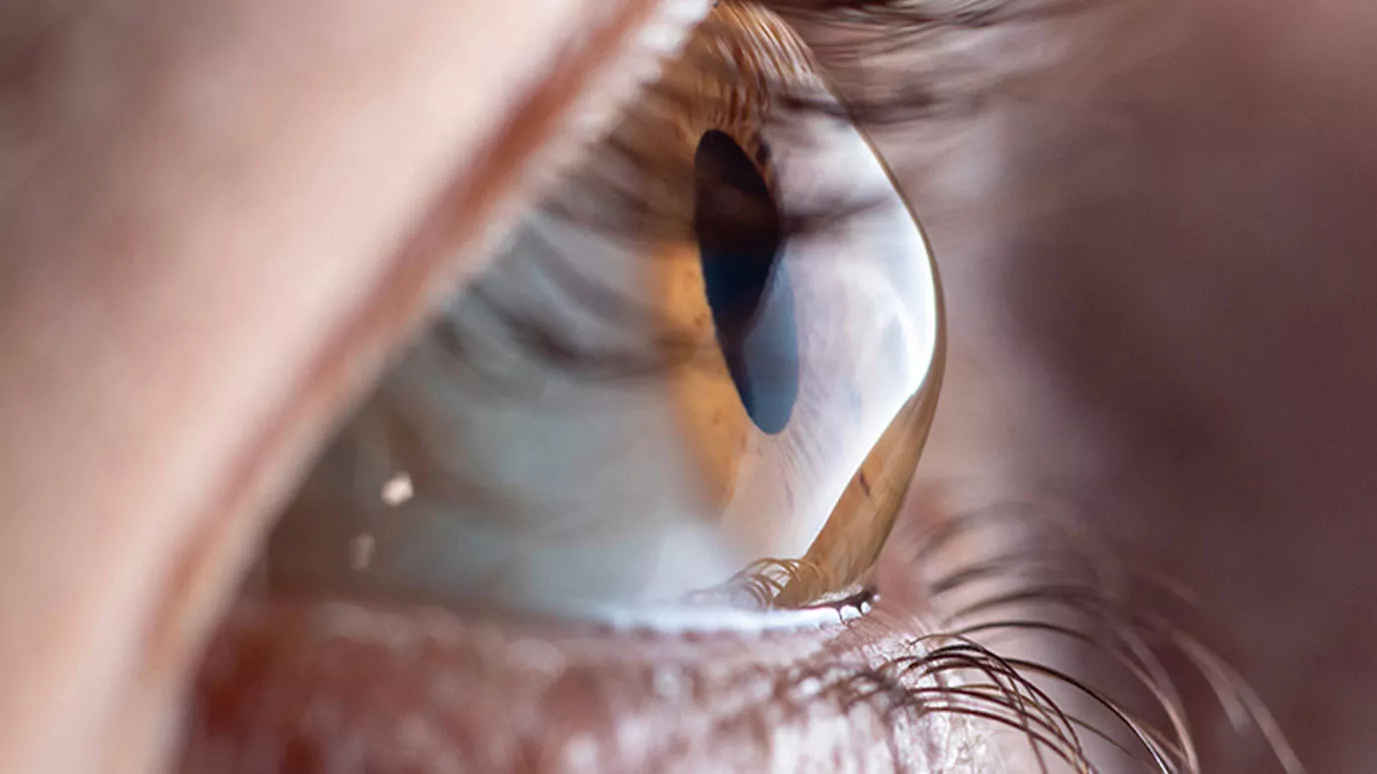Keratoconus represents a progressive, non-inflammatory thinning and protrusion of the central cornea (the front surface of the eye) usually manifesting itself in youth or adolescence, although the age of onset can be anywhere between 7 and 50. It is nearly always bilateral, although it is often asymmetrical.
Considerable visual impairment can result due to the development of a high degree of irregularity associated with this front surface ("window") of the eye. Due to this marked distortion and irregularity the improvement in vision obtained with spectacles may be minimal. There is usually a marked improvement in vision if rigid contact lenses (or similar) are fitted and they are often the only adequate means of correction for patients suffering this condition.
Keratoconus is a genetic condition that occurs in about one in 2,000 people, occurring with equal frequency in males and females. The hereditary nature of the condition is actually quite weak, so only about 10% of people with keratoconus will have an affected relative. Keratoconus is sometimes associated with other conditions such as allergies, asthma, eczema and double jointedness.

Excessive eye rubbing has also been strongly implicated as a possible causative factor. Signs and symptoms of keratoconus include a blurring and distortion of vision that cannot be totally alleviated by spectacle correction; frequent changes in the spectacle prescription over a relatively short period of time; reduced night vision with ghosting and haloes noticed around lights; multiple images observed with the one eye; and eye strain and headaches.Corneal collagen cross-linking treatment (CXL) of keratoconus is a non-invasive procedure which is aimed at halting the progression of the keratoconus.
The procedure works by increasing collagen cross-linking, which helps to prevent the cornea from becoming more conical and irregular, as it would normally with progression of the keratoconic condition. During the treatment, riboflavin eyedrops are applied to the cornea and then activated by UVA radiation. This process has been shown in laboratory and clinical studies to increase the amount of collagen cross-linking in the cornea, thereby resulting in a stronger cornea. At this stage, the treatment is still classed as an investigational procedure although early studies have shown that the CXL treatment does stop the keratoconus from progressing.
The real benefit from CXL treatment is that it has the potential to greatly reduce the number of keratoconic patients who will go on to require a corneal transplant. In the earliest stages of keratoconus, a spectacle correction may be used to correct the myopia and astigmatism associated with this condition. Soft contact lenses can often also be prescribed during this time for general, recreational, or sporting use.
As keratoconus progresses, the additional corneal thinning results in the shape of the cornea becoming more irregular to the point that it is not possible to obtain adequate vision with spectacles or soft contact lenses. At this stage, rigid or hybrid contact lenses are then required to provide optimal vision.
Hybrid contact lenses consist of a rigid central portion attached to a peripheral soft skirt and they are also a good option for keratoconics who play contact sports such as football, as rigid lenses may be easily dislodged during these types of activities. A corneal transplant (graft) will be required in about 5% of cases of keratoconus.